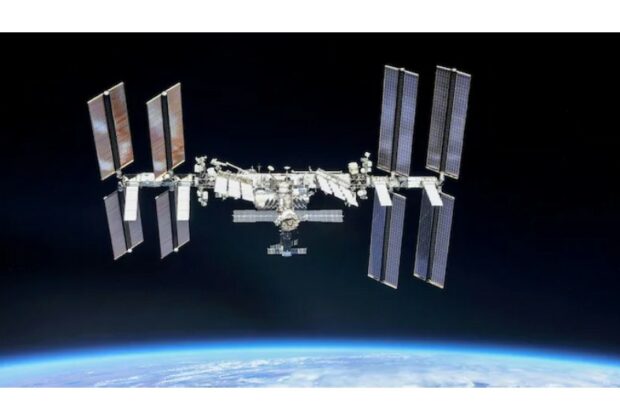The reason and extent of an air leak in the Russian section of the ISS, which NASA fears could result in a “catastrophic failure” of a portion of a Russian module, are still up for debate between Roscosmos and NASA.
In a brief meeting on November 13, NASA’s ISS Advisory Committee brought up the disagreement, recalling a September meeting with its Roscosmos counterpart in Moscow to discuss station-related issues.
A minor but continuous leak in the Zvezda service module’s PrK vestibule, which divides a docking port from the remainder of the module, has been the main cause for concern. Station crews have been addressing the leak for a number of years by cutting off PrK from the rest of the station when they are not required to access Progress cargo spacecraft that are moored at the port.
“Although the teams continue to investigate the causal factors for the crack initiation and growth, the U.S. and Russian technical teams don’t have a common understanding of what the likely root cause is or the severity of the consequences of these leaks,” Said Bob Cabana, an associate administrator and former NASA astronaut who currently chairs the committee.
According to him, Russian engineers think that “high cyclic fatigue” from micro-vibrations is probably what caused the fissures. NASA, on the other hand, thinks a number of elements are involved, such as residual stress, pressure and mechanical stress, the module’s material qualities, and exposure to the environment.
The leaks, which have not been observed anywhere in the station, were caused by “internal and external welds,” according to a September study from NASA’s Office of Inspector General (OIG).
NASA officials downplayed the concerns during a briefing on September 27. According to the OIG report, the leaks were originally discovered in 2019 but had increased to their highest rates to date early this year, resulting in a daily loss of 1.7 kg of air. Agency representatives stated during that briefing that the leak rate was lowered by a third as a result of recent repairs.
However, the agencies and space station staff continue to be concerned about the leakage. The Russian counterparts have been “very open” about the problem, but NASA takes safeguards while the hatch to PrK is open, according to Michael Barratt, a NASA astronaut who returned to Earth in October on the Crew-8 mission after almost eight months on the station, during a briefing on Nov. 8.
In order to mend the rift between the Russian and American sides during those times, he stated, “We’ve taken a very conservative approach.” “It’s not a comfortable thing but it is the best agreement between all the smart people on both sides, and it’s something that we as a crew live with.”
During the committee discussion, Cabana stated that Roscosmos and NASA cannot agree on how serious the problem is. “While the Russian team continues to search for and seal the leaks, it does not believe catastrophic disintegration of the PrK is realistic,” he stated, adding that it is still looking for and sealing the leaks. “NASA has expressed concerns about the structural integrity of the PrK and the possibility of a catastrophic failure.”
He concluded by saying, “The Russians believe that continued operations are safe but they can’t prove to our satisfaction that they are, and the U.S. believes that it’s not safe but we can’t prove to the Russians’ satisfaction that that’s the case,”
According to Cabana, the NASA and Roscosmos committees jointly recommended to the presidents of their respective agencies that they should keep looking for a “common understanding of the structural integrity” of PrK and enlist the help of outside academic and industrial specialists.
He stated that NASA has enlisted an outside team to evaluate the leaks, but he did not provide a timeline for those operations. “This is an engineering problem, and good engineers should be able to reach a solution and agree on it.”
At the Crew-8 briefing, Barratt stated, “The station is not young. It’s been up there for quite a while. You expect some wear and tear, and we’re seeing that,”
The conference, which was supposed to last an hour according to the Federal Register notice, barely lasted roughly ten minutes, with the main focus being the PrK leak. The group held its first public meeting since March 2020, when it was chaired by the late astronaut Tom Stafford, who died in March of this year.








